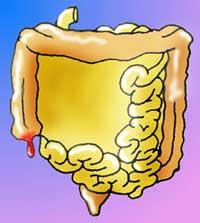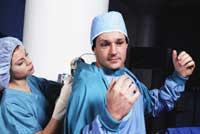Appendicitis, unserious pain

Suffering and anguish are the causes of gut pains that prevent standing. Between 10 and 30 years it is common for the appendix to be responsible for these gut pains. Rather, inflamed appendix, appendicitis.
The appendix is an extension of the cecum—the initial part of the large intestine—9-10 centimeters in length. Appendicitis is an inflammation of the appendix, severe or chronic. As already indicated, strict appendicitis usually lasts between 10 and 35 years, and is not thought to be isolated cases. They say that for the extraction of the appendix it is necessary to go from 7 to 12% of the population. It affects both women and men in the same proportion, except in adolescence. In this age range, the number of men affected by appendicitis is twice that of women.
The cause of acute appendicitis is not yet known, but it appears to occur when fecal matter, parasites, or tumors obstruct the pen of the appendix. In children, appendicitis is also due to lymphatic hypertrophy, i.e., increased lymphatic size as a result of excessive development of the components. As a consequence of the obstruction, hypertension occurs that produces a series of painful effects such as difficulties in the venous and arterial circulation, bacterial invasion, inflammation of the lymphatic tissue and, in the worst case, perforation. Unfortunately there are no preventive measures.
From the first symptoms to the operating room

The symptoms that predict appendicitis are many, but in all cases the only one that appears is the pain of the gut. Initially the pain occurs around the navel and extends to the lower right part of the abdomen. The intensity of pain changes with movement, such as coughing increases and breathing deeply.
On the other hand, they are also often the lack of appetite and the desire to vomit. Two-thirds of people with appendicitis have felt like vomiting. Beef is not as rich in patients, and most of the time it is in children. Fever is also a symptom of appendicitis, but not very high
The doctor removes a sample of blood for appendicitis and takes it to the lab to predict if there is inflammation or infection. In fact, appendicitis increases the number of white blood cells. During the test, the child should not eat or drink anything to be prepared for surgery if the test requires it. A urine study should also be done to ensure that those responsible for pain are not kidneys or vesicles.
The ideal is to operate immediately after the first symptoms, and the truth is that the pain is acute and does not take too long to go to the doctor. The appendix is removed from small openings in the lower abdomen. The recovery is done relatively soon and although the first few days you have to take care of the food, gradually returns to the diet. It is important that the patient is sitting in the chair, even walking as much as possible, although at first it is quite painful. If the patient is a child, he will return to ikastola shortly after returning home, but he will not be able to do sports for a couple of months.

If the appendix has broken, more must be opened to exit. Peritonitis (inflammation of the abdominal cavity) may occur, which is cured with antibiotics for ten days.
In addition, if we look at history, much more painful and dangerous interventions are observed. The British surgeon Claudius Amyan performed the first appendicitis intervention in 1875, without anesthesia. According to the surgeon's testimony, "for me the intervention was as painful as it was complicated for the patient." He saw the perforated appendix while operating a hernia. The sick man – miracle – was healed.
Ten years later, in 1886, the pathologist anatomist of Reginald Fitz Harvard published data on a study with 500 deaths from appendicitis. It was considered the appendix responsible for the abscess and peritonitis, but Fitz was not a surgeon, so only some young people valued these conclusions. One of these young men was George Thomas Morton, son of one of the pioneers of anesthesia, and on April 27, 1887, in Philadelphia, he successfully operated a 26-year-old.
What is the function of the appendix?

Although it has not yet been clarified whether the appendix currently fulfills any function, the most widespread hypothesis is that it is a waste inherited from our ancestors. Herbivorous mammals have longer bowels than carnivores, since vegetables are assimilated more easily than meat. The oldest ancestors of the human being had above all a herbivorous diet, but when they settled in open areas it is believed that more and more meat began to be eaten. As mentioned in the book 'The chosen species' by Juan Luis Arsuaga, these changes occurred about 2.5 million years ago. There were three related changes (it is not clear in what order they occurred): diet change, intestinal shortening and brain increase. In fact, the energy needed to maintain a larger brain was somehow compensated by the savings that were obtained by having a shorter intestine. Therefore, it seems that the appendix is the rest of the time when our ancestors had longer intestines.
But there are other hypotheses. The appendix is very rich in lymphatic tissues and, according to one hypothesis, plays an important role in the development of the embryo. In particular, some scientists believe that it participates in immune defense, in the creation of lymphocytic cells with defensive function against microorganisms.
Published in 7K.
Buletina
Bidali zure helbide elektronikoa eta jaso asteroko buletina zure sarrera-ontzian











